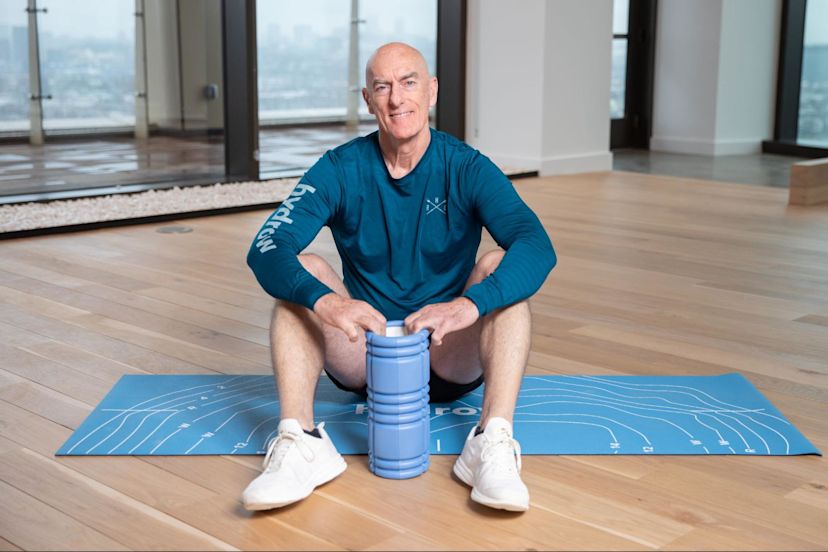Stretching Before or After a Workout: What Is the Right Approach?

Stretching is an integral part of any fitness routine, and the timing of your stretches can significantly impact the effectiveness of your workout. The question that often arises is whether it's better to stretch before or after a workout. To make an informed decision, it's crucial to understand the different types of stretching and their benefits.
In this article, we'll explore the advantages of both dynamic and static stretching before and after a workout, including:
Let's dive in!
Stretching before a workout: Dynamic stretching
Dynamic stretching involves moving parts of your body through range of motion, as preparation before activity. Unlike static stretching, which involves holding a stretch for an extended period, dynamic stretching prepares your body by activating the muscles you'll use during your workout.
Benefits of dynamic stretching before a workout
Increased Blood Flow: Dynamic stretching gets your heart rate up and boosts blood flow to the muscles, enhancing their responsiveness.
Improved Flexibility: This type of stretching encourages a greater range of motion, allowing your joints and muscles to move freely while still holding onto the elasticity in your muscles.
Enhanced Muscle Activation: By engaging the muscles actively, dynamic stretching primes them for the upcoming activity, leading to better performance.
Injury Prevention: Dynamic stretching helps prevent strains and injuries by gradually warming up the muscles, tendons, and ligaments.
Examples of dynamic stretches
“Eagles”: While lying on your back, sweep the right leg across your body towards your left arm, without forcing the movement. Let your body seek out its comfortable range of motion. Perform the same motion with the left leg.
“Scorpions”: While lying facedown, lift and reach your right leg behind you toward your left side and vice versa.
Side-Lying T-Spine: While lying on your side, flex the top hip above 90 degrees — you can use a foam roller or medicine ball for support if needed. Rotate your top shoulder toward the floor while maintaining contact with the foam roller or floor. Reach out with your top arm at about a 45-degree angle from the body. Reach the bottom arm toward the ceiling. This movement helps to gradually open the rotational movement of your spine.

Explore Hydrow's library of 5,000+ rowing, circuit training, yoga, Pilates, and mobility workouts.
Stretching after a workout: Static stretching
After your workout, especially if it was a challenging workout, it’s great to do static stretches. Static stretching is the best way to help muscles recover — it decreases the chance of having soreness the next day or two. We recommend slowly performing static stretches after your workout, paying particular attention to the specific muscles you focused on during your workout.
The benefits of static stretching after a workout
Reduced Muscle Soreness: Gentle stretches help release built-up tension, reducing post-workout soreness.
Improved Circulation: Active recovery stretching aids in the removal of metabolic waste products, enhancing blood flow and facilitating the healing process.
Enhanced Flexibility Maintenance: Stretching after a workout helps maintain flexibility and helps to bring tissue back to a more normal or relaxed state.
Mental Relaxation: Static stretching provides a calming effect on the mind, promoting mental recovery along with physical recovery.
Examples of static stretches
Hamstring stretch: This stretch is performed from a lying position, where you’re in a supported and yet relaxed position.
Glute/Piriformis stretch: This stretch helps to open the glute muscles.
Calf stretch: This is particularly important if your primary activity involves running.
Quad stretch: This stretch is performed in a supportive position where other parts of your body can settle in and relax — this allows the muscles to calmly stretch.
Why stretching before and after your workout is worth it
In the debate of whether it's better to stretch before or after a workout, the answer lies in a combination of both. Dynamic stretching before a workout primes your body for physical activity, increasing blood flow, flexibility, and muscle activation. On the other hand, static stretching after a workout helps reduce muscle soreness, improve circulation, and promote mental relaxation.
Remember, everybody is different, so it's important to listen to your own cues. Pay attention to how your body responds to stretching at different times and adjust your routine accordingly. By incorporating these various forms of stretching into your fitness routine, you'll not only enhance your performance but also protect yourself against potential injuries, ultimately reaping the full benefits of your workouts.

Explore Hydrow
Learn more about how you can transform your fitness routine with a rowing machine.




